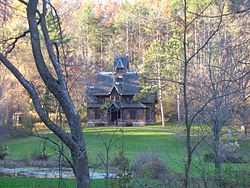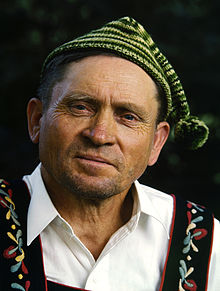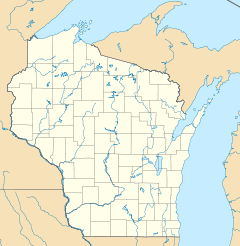- Little Norway, Wisconsin
-
Little Norway
 The Norway Building built in Norway for Chicago's Columbian Exposition.
The Norway Building built in Norway for Chicago's Columbian Exposition.Location: 3576 CTH JG, Blue Mounds, Wisconsin Coordinates: 43°1′32″N 89°47′44″W / 43.02556°N 89.79556°WCoordinates: 43°1′32″N 89°47′44″W / 43.02556°N 89.79556°W Area: 53 acres (21 ha) Built: 1927 Architect: Hansteen, Albert Waldemar; Nerdrum, Stanley Architectural style: Modern Movement Governing body: Private NRHP Reference#: 98000169[1] Added to NRHP: March 16, 1998 Little Norway is a tourist attraction and living museum of a Norwegian village located in Blue Mounds, Wisconsin. Little Norway consists of a fully restored farm dating to the mid-19th century. It is listed on the National Register of Historic Places.[2]
Contents
History
Little Norway began when Osten Olson Haugen, an immigrant from Telemark, Norway, settled on 40 acres (160,000 m2) during the 1850s. Mr. Haugen built a dwelling house and other buildings out of timber cut on the property. The Haugen family farmed the land until 1920.[3]
In the early 1930s, a Chicago business man named Isak Dahle was inspired by a recent tour of Norway and memories of his childhood in Southeastern Wisconsin to replicate a Norwegian farm as a gift to his family. He christened it Little Norway and gave it the Norwegian name Nissedahle—a pun on the word dal, meaning valley, and his surname. Dahle died of cancer in 1937. Little Norway still honors his legacy as a museum.
Norway Building
 Early color photograph of a guide at Little Norway. Taken by Arthur Rothstein for the Farm Security Administration, 1942. Digitally restored.
Early color photograph of a guide at Little Norway. Taken by Arthur Rothstein for the Farm Security Administration, 1942. Digitally restored.
Perhaps the best-known attraction at Little Norway is the Norway Building which was built in Norway for the Norway Pavilion at Chicago's 1893 World's Columbian Exposition. It was moved to this location and is one of the few examples of original Norse stave church architecture outside of Norway. Along with the Maine State Building in Poland, Maine, the Norway building is one of the few remaining buildings from the Chicago World's Fair.
After the closing of the Chicago World’s Fair, the Norway Building was sold to C.K.G Billings, a prominent Chicago business man, and relocated by train to his vacation estate in Lake Geneva, Wisconsin. While in Lake Geneva, the Norway Building passed through multiple owners and was used primarily for recreation. The Norway Building fell into disrepair during the Great Depression. It was purchased by Little Norway founder Isak Dahle in 1935.
Other attractions
- Stabbur - a food storehouse on a raised foundation of heavy timbers
- Sod roofed cabin - built into the hillside to allow goats to graze on its rooftop
- Main cabin - which once housed cattle and sheep
- Spring house - shelters the pure, spring-fed water which runs through the property
- Stue - the family home
- Bachelor’s cabin - originally a loom and spinning wheel space, adapted to house Osten Haugen’s brother-in-law
- Laden - a tool room converted to a snug cabin, roofed with old-fashioned hand-split shakes
References
- ^ "National Register Information System". National Register of Historic Places. National Park Service. 2009-03-13. http://nrhp.focus.nps.gov/natreg/docs/All_Data.html.
- ^ A Quest for Norwegian Folk Art in America (Tora Bøhn. Norwegian-American Historical Society. Volume 19: Page 116)
- ^ Osten Olsen Haugen (About Little Norway)
External links
Categories:- Museums in Dane County, Wisconsin
- Ethnic museums in Wisconsin
- Open air museums in Wisconsin
- National Register of Historic Places in Wisconsin
- Norwegian migration to North America
- World's fair architecture in the United States
- Norwegian American culture
Wikimedia Foundation. 2010.

